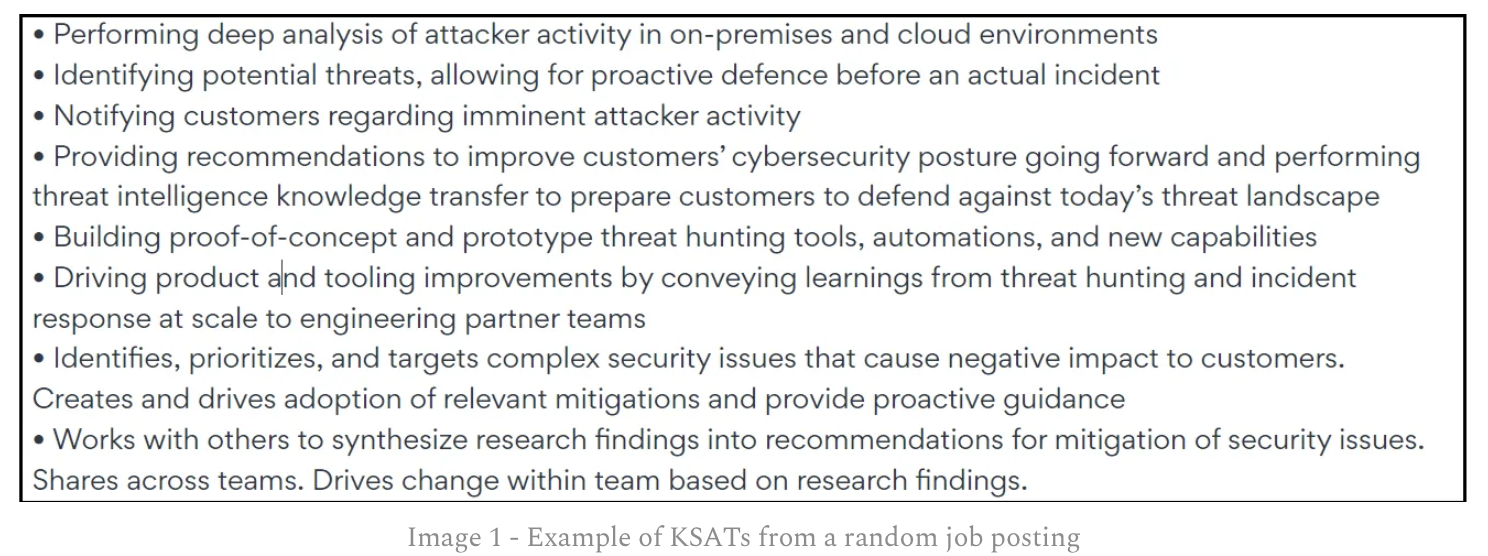MCSI #026: The science of career development and job task analysis
Contents
MCSI #026: The science of career development and job task analysis#
Every candidate claims they’re the perfect fit for the job, yet some walk into the interview knowing less about the company than a cat knows about astrophysics. It’s like saying you’re ready to pilot a spaceship because you once flew a kite. Knowing your skills is half the battle; demonstrating how they align with what the company actually does is how you launch into orbit.

Welcome to our guide on mastering career development through job task analysis. We’ll show you how to extract and analyze key knowledge, skills, abilities and tasks (KSATs) from job postings, identify your gaps, and create a training plan to address them.
Whether you’re aiming to advance in your current field or switch to a new one, this guide will provide the practical tools and insights needed to improve your employability and achieve your career goals.
Step 1 - Extract KSATs from Job Postings#

Understanding the requirements of your desired job role is the first step in career development. Job postings are a goldmine of information, detailing the KSATs that employers seek in candidates. To start, focus on thoroughly reading job descriptions relevant to your career aspirations. Here’s how to effectively extract KSATs:
Identify Core Requirements: Look for sections in the job postings that list specific qualifications, skills, and experiences. These are typically highlighted under headings like “Requirements,” “Qualifications,” or “Responsibilities.”
Highlight Keywords and Phrases: Use highlighters or a digital tool to mark important keywords and phrases that recur across multiple postings. These often represent the core KSATs needed for the role.
Organize and Categorize: Create a spreadsheet or a database where you can categorize the extracted information into Knowledge, Skills, Abilities and Tasks. This organization will aid in analyzing how these elements interrelate and prioritize them based on the needs of the industry or specific job.
Step 2 - Analyze the Data in a Spreadsheet#

Once you have collected KSATs from job postings, the next step is to analyze this data to understand the job market demands and how you fit into them. A spreadsheet is an excellent tool for this analysis, allowing you to sort, filter, and organize data effectively. Here’s how to proceed:
Input Data Methodically: Enter the extracted KSATs into a spreadsheet. Ensure each entry is consistent.
Prioritize and Rank: Assess the frequency and importance of each KSAT across different job postings. Rank them based on how often they appear and their relevance to the roles you are targeting. This will help you identify the most in-demand KSATs in your chosen field.
Gap Analysis: Create a column next to your KSATs for self-assessment. Mark your current proficiency or experience level against each KSAT. This will visually highlight where you meet the requirements and where there are gaps needing attention.
Identify Trends and Patterns: Look for trends in the data that indicate specific industry directions or focus areas. For instance, if certain skills are increasingly in demand, it may signal a shift in industry standards or emerging technologies.
Step 3 - Identify Gaps in Personal KSATs#
With a detailed analysis of job market KSATs in hand, the next step is to assess how your current skills and experiences align with these requirements. This gap analysis will help you pinpoint the areas you need to focus on to enhance your employability. Here’s how to conduct this assessment effectively:
Self-Evaluation: Compare your current set of skills, abilities, knowledge, and experiences with the KSATs listed in your spreadsheet. Be honest and objective about your level of proficiency and experience in each area.
Highlight the Gaps: Identify where your KSATs fall short of the job market demands. These gaps are your key areas for development. Highlighting these will provide a clear focus for your training and development efforts.
Consider the Context: Contextualize each gap in terms of your career goals and the industry you are targeting. A gap in a highly demanded skill within your desired industry should take priority over less critical areas.
Set Improvement Goals: For each identified gap, set specific, measurable, achievable, relevant, and time-bound (SMART) goals. This will make your development plan actionable and allow you to track progress over time.
Step 4 - Build a Training Plan#
“If you fail to plan, you are planning to fail!” - Benjamin Franklin
After identifying the gaps in your KSATs, the next step is to develop a training plan tailored to your needs. This plan will guide your efforts to acquire the necessary skills and knowledge to advance your career. Here’s how to create an effective training plan:
Set Clear Objectives: Define what you aim to achieve through your training. Each objective should address a specific gap in your KSATs, contributing to your overall career goals.
Research Training Options: Explore various training and educational resources that align with your objectives. These could include online courses, workshops, seminars, certification programs, or self-study materials. Prioritize those that are most relevant and offer practical, applicable knowledge or skills.
Create a Timeline: Establish a realistic timeline for achieving your training objectives. Consider your current commitments and set achievable deadlines for completing each training module or course. This will help you maintain progress and stay motivated.
Allocate Resources: Determine the resources you need to execute your training plan, including time, money, and materials. Plan how you will allocate these resources effectively to avoid overcommitting or underfunding your development efforts.

Step 5 - Prepare a Portfolio with MCSI Exercises#
“The portfolio is the critical step that almost everyone overlooks, leading to the common mistake of sending template CVs that fail to resonate with specific job postings. A tailored portfolio, in contrast, vividly demonstrates your skills and experiences in relation to the job’s requirements, setting you apart in the competitive job market.” Benjamin Mossé
Building a portfolio through Mossé Cyber Security Institute (MCSI) exercises is a strategic approach to showcasing your cybersecurity competencies. MCSI’s training emphasizes hands-on, real-world tasks, challenging you to apply critical thinking and troubleshooting skills without predefined solutions. Here’s how you can leverage MCSI’s offerings to build a compelling portfolio:
Complete Practical Exercises: Engage in MCSI’s practical exercises that mirror real-world scenarios - select the most relevant exercises.
Demonstrate Competencies: Successfully completing MCSI exercises allows you to accumulate certificates and build a portfolio of demonstrated skills by producing videos, reports, briefings, source code etc. This portfolio serves as tangible evidence of your capabilities and readiness to tackle the jobs you want to apply for.
Step 6 - Show Up Prepared#
In the final step, arrive at interviews ready to demonstrate that you can meet the job’s demands. Bring a well-crafted portfolio that showcases your direct experience with the work KSATs outlined in the job description. This portfolio is your evidence, making abstract skills concrete and demonstrating your proactive approach to learning and problem-solving.
Moreover, prepare to discuss any gaps in your experience with a clear training plan that shows your initiative to develop those areas. This step is crucial; many overlook the power of a personalized portfolio and a strategic training plan, relying instead on generic CVs that fail to capture their unique fit for the role. Being prepared in this way will set you apart and make a strong case for your candidacy.
If you haven’t started learning with MCSI yet, pick up a course and get going.

